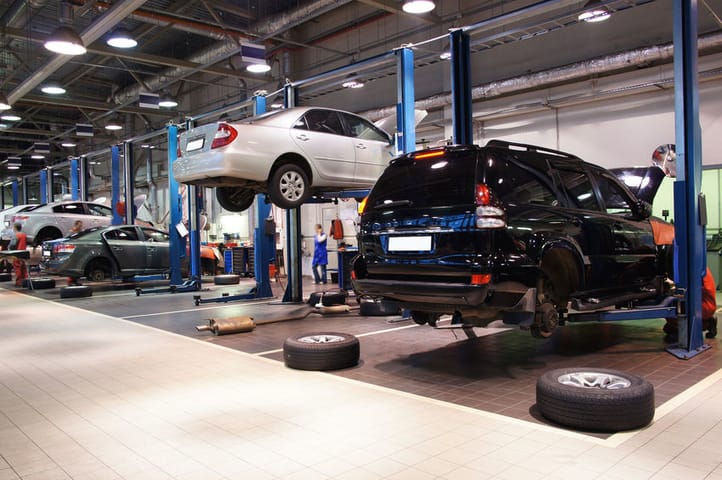All Categories
Featured

2 key solutions that are commonly neglected however have a considerable impact on tire durability and performance are tire rotation and positioning. Allow's dive into what tire turning and alignment are and why they're crucial for your vehicle.
What Is Tire Rotation? Tire rotation is the process of moving your tires from one placement to an additional to guarantee they put on evenly. Given that your vehicle's tires operate at various rates depending upon their placement (front tires versus rear tires), turning them regularly helps to disperse the wear uniformly, causing a longer life expectancy for your tires.
Tires on the front axle often tend to wear faster than those on the back axle, particularly in front-wheel-drive cars, where the front tires manage both guiding and power. On the other hand, rear tires may use unevenly depending on the automobile's weight distribution and driving conditions. By revolving your tires every 6,000 to 8,000 miles (or as recommended by the manufacturer), you'll make certain a more balanced wear pattern.
What Is Tire Placement? Tire positioning, additionally referred to as wheel placement, describes adjusting the angles of your automobile's wheels to the producer's specifications. Correct alignment makes sure that your tires are directing in the right instructions, and it helps maximize tire life and boost car handling. There are three primary aspects of alignment: camber, caster, and toe.
Camber refers to the tilt of the tires from the front of the automobile. If your tires are tilted also much internal or outside, it can create irregular wear. Wheel describes the angle of the guiding axis when seen from the side of the cars and truck. This influences the security of the steering, especially when driving straight. Toe refers to the angle at which the tires direct inward or outside when watched from above. This influences just how your vehicle tracks when driving. A correct alignment guarantees that all 4 tires are aiming straight ahead and are angled appropriately. Misalignment can arise from hitting holes, visuals, or merely from the wear of suspension elements in time.
Why Tire Turning and Placement Matter. Extended Tire Life. Both tire turning and alignment assistance stop unequal tire wear. When your tires put on equally, they last longer, which can save you money in the future by minimizing the requirement for early substitutes.
Improved Security. Proper tire rotation and positioning enhance vehicle security and handling. Misaligned tires or erratically used tires can adversely impact your ability to steer and quit your car, specifically in emergency situation situations. Regular upkeep ensures your tires carry out ideally, offering a safer driving experience.
Better Gas Efficiency. If your tires are not lined up appropriately, they might drag versus the roadway surface, creating resistance. This added rubbing can decrease gas effectiveness, triggering your automobile to consume more gas. Regular tire alignment makes certain that your automobile relocates successfully, enhancing gas mileage.
Enhanced Convenience. Imbalance or erratically worn tires can cause a rougher adventure, as your auto might draw away or create vibrations. By maintaining your tires rotated and straightened, you'll take pleasure in a smoother and a lot more comfortable driving experience.
Indicators That Your Tires Required Turning or Positioning. It's necessary to stay sharp for any indicators that your tires need rotation or positioning. Keep an eye out for these usual indications:
Irregular Tire Wear: If you notice that a person tire is significantly extra worn than the others, it may be time for a rotation or alignment. Steering Pull: If your automobile pulls away while driving right, this can suggest misalignment. Vibrations: If you feel resonances in the guiding wheel or the automobile itself, it can be an indication of misalignment or irregular tire wear. Screeching Tires: Unusual tire noise could also show incorrect positioning or the requirement for a tire rotation. Just how Usually Should You Revolve and Align Your Tires? Tire rotation need to normally be done every 6,000 to 8,000 miles or as specified in your car's proprietor's manual. It's an excellent concept to rotate your tires during every oil modification, as this will help you stay on top of routine maintenance.
When it comes to positioning, it doesn't require as constant solution. Generally, alignment should be inspected a minimum of yearly or whenever you see issues like drawing away or resonance. You might additionally need positioning if you've hit a big split or curb, which can throw your wheels out of alignment.
Conclusion: Maintain Your Tires in Leading Forming. Tire turning and positioning are vital services that maintain your lorry running efficiently, securely, and effectively. By making the effort to have your tires rotated and aligned routinely, you're purchasing your automobile's performance and durability, while likewise boosting your security when traveling. Keep positive with tire upkeep, and your car will certainly thanks with better fuel economic situation, enhanced handling, and prolonged tire life.
Latest Posts
Check Out Outstanding Car Repair Care from Montclare Auto Repair – Keep Your Car Running Smoothly
Discover the Best Auto Repair Coupons in Montclare, Chicago
Discover WyHy FCU – The Key to Superior Financial Services in Wyoming
More
Latest Posts
Check Out Outstanding Car Repair Care from Montclare Auto Repair – Keep Your Car Running Smoothly
Discover the Best Auto Repair Coupons in Montclare, Chicago
Discover WyHy FCU – The Key to Superior Financial Services in Wyoming